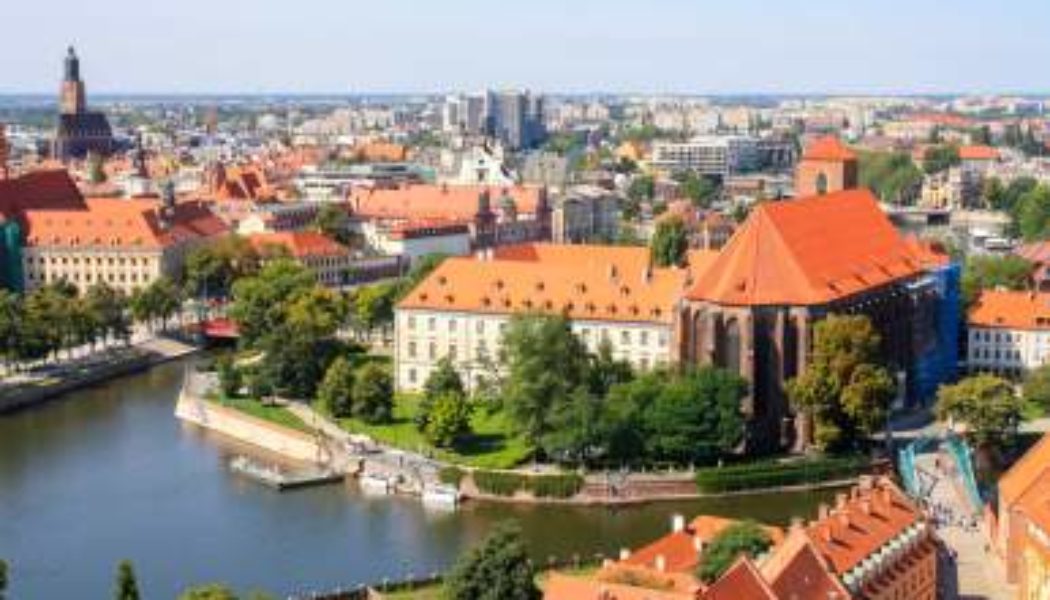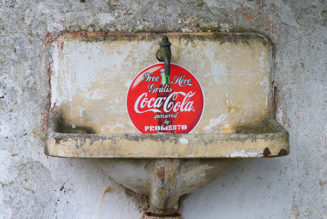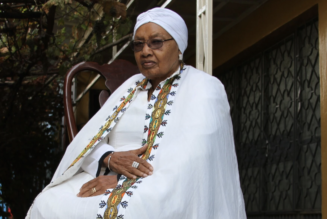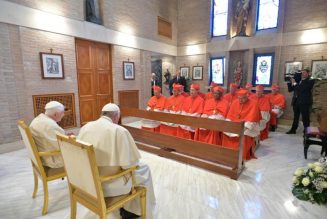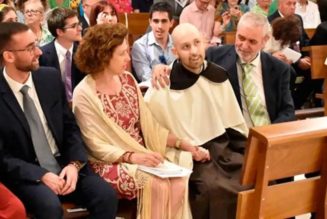Classical music speaks to us, even if much of it is wordless. It communicates to us, nonetheless, through its powerful and complex melody, rhythm, and harmony, employing a beautiful and mathematical language that enchants, agitates at times, inspires, sooths, and stimulates. In contrast to the immediately pleasing and entertaining pop music, classical music opens up a new world of ideas and imagination, and leads us to spiritual depths of reflection, even when the music is not explicitly sacred.
Frodo Baggins describes such an experience, within J.R.R. Tolkien’s The Lord of the Rings, when first hearing music within the elven realm of Rivendell:
At first the beauty of the melodies and of the interwoven words in elven-tongues, even though he understood them little` held him in a spell, as soon as he began to attend to them. Almost it seemed that the words took shape, and visions of far lands and bright things that he had never yet imagined opened out before him; and the firelit hall became like a golden mist above seas of foam that sighed upon the margins of the world. Then the enchantment became more and more dreamlike, until he felt that an endless river of swelling gold and silver was flowing over him, too multitudinous for its pattern to be comprehended; it became part of the throbbing air about him, and it drenched and drowned him. Swiftly he sank under its shining weight into a deep realm of sleep.
The Fellowship of the Ring

I’ll never forget the first time I attended a classical concert, a performance of Beethoven during a high school study abroad year in Poland. I suppose the setting was a close to Rivendell as I could get in the beautiful city of Wroclaw. It was my first experience of musical ecstasy, hearkening to Frodo’s experience in Rivendell. I liked classical music before that. I loved it afterwards.
If you haven’t experienced this kind of musical ecstasy, then it’s about time! Here are some introductory pieces to give you a crash course in the great composers and works of classical music. I find that moving through music historically helps you to understand how it develops and the particular genius of the great composers who take it to the next level. I am speaking as a theologian, not an expert in music. As someone who has been appreciating classical music for decades, I’m happy to offer these entry points for those looking to begin exploring this great tradition.
1. Palestrina – Missa Papae Marcelli (1567)
Classical music developed directly out of the Church’s sacred music. It was through Gregorian chant that modern musical notation developed. Chant was sung a capella (literally, in the chapel) and in unison, but by the high Middle Ages the technique polyphony arose, meaning the same text was sung by many voices at once, creating harmony. This tradition reached its apex under Palestrina, a layman serving the Church in Rome. He perfected the technique of counterpoint, rules for perfecting harmonies, that was studied later by Bach and led to the development of more complex orchestration. This Mass is his most famous composition and was used for the coronation of popes for centuries. In this heavenly music, you won’t hear any instruments and only male voices perform (men and boys).
2. Antonio Vivaldi – Four Seasons (c.1716-17)
For our second piece, we’re staying in Italy and it was the Italians who developed the instruments and terminology used in classical music. Think of the piano (meaning “soft” in Italian) and crescendo (Italian for “rise”). Vivaldi is a well-known figure, but his nickname “the red priest” reveals a lesser known fact about him: he was a priest (if not a particularly devout one). He did write some beautiful sacred music, such as his “Gloria” and an oratorio (like an opera without dramatic action) on the book of Judith. His “Four Seasons,” a collection of concertos that are rightly considered his masterpiece and clearly evoke the sights and sounds of nature (including birds and barking dogs) and weather (storms, ice, fire).
3. Johann Sebastian Bach – Brandenburg Concerto No. 4 in G Major (1721)
If Palestrina shows classical music’s sacred roots, we also can see in the influence of the mundane, with dancing helping to shape the concerto (and later the symphony). The concerto draws together an ensemble of instruments, while featuring solo performances, and is comprised of three movements, a fast, slow, and final fast movement, with the final one drawing on the form of a dance, such as a minuet or scherzo. Bach wrote the Brandenburg concertos to show off, seeking to land a comfortable court position, but to no avail. We benefit from them, nonetheless, including this fourth concerto that amazing features two recorders. Bach’s primary job was to write sacred music for the Lutheran church, leaving us an enormous amount of beautiful cantatas and service music and even his masterful Catholic “Mass in B Minor,” my personal favorite. There is an entire world to discover in Bach, but his famous Brandenburg Concertos provide a great entry point.
4. George Frideric Handel – Water Music (1717)
Bach and Handel were born in the same year, only 80 miles apart. Handel learned from the Italians and stimulated classical music back North, first in Hamburg and then in England, where he became famous for writing Italian operas. We are most familiar with his oratorio “The Messiah,” setting biblical texts to music, which was actually written for Easter, not Christmas (think of the “Hallelujah Chorus”). “Water Music” is an impressive achievement, composed of three suites, longer than concertos, and performed by a large orchestra, not only outdoors but originally on barges in the Thames River. Handel wrote it at the request of his old boss, the Elector of Hanover, who had recently become King George I. It has a royal feel to it, and although the music isn’t evocative of water, it’s not hard to imagine listening to it in a royal retinue—why not on the water!

5. Wolfgang Amadeus Mozart – Eine kleine Nachtmusik (1787)
It may have been one of the most difficult decisions in my life to choose one recommended piece by Mozart. I joked with my wife that I could have just chosen ten pieces by Mozart! Along with his friend Haydn, Mozart represents the shift from the Baroque to the classical period, known for its rational perfection and harmony and for mellowing out some of the Baroque intensity. This time period saw the perfecting and addition of some instruments such as the piano, much more soothing than the harpsichord, and the clarinet. Mozart’s piano and clarinet concertos are simply stunning and inexhaustible in their richness. He has wrote sublime Church music and glorious operas, but I recommend starting with a shorter piece (in four movements but just under 20 minutes), “Eine kleine Nachtmusik,” a serenade of a “little night music”—a delightful piece composed for a social gathering and performed by a chamber ensemble. There is another world to discover in Mozart that will not disappoint and should enjoyed alongside of Bach’s.
6. Ludwig van Beethoven – Symphony No. 6, The Pastoral Symphony (1808)
Beethoven exploded classical music, elevating its expressive power with his dynamic passion and energy. He mastered the classical technique of Mozart and Haydn and took up their preferred musical form in the symphony, a four-movement work with a full orchestra that became classical music’s marquee showcase. When it comes to Beethoven, I feel like saying: Pick a symphony, any symphony. Well, if I have to pick one for you, why not the pastoral symphony, his sixth? But really you couldn’t go wrong with his most famous fifth, or the seventh, but in the pastoral symphony you’ll get a soothing and delightful piece that, like Vivaldi, evokes a country setting, shepherds, and a big storm. If you want some other Beethoven suggestions, I also absolutely love his Emperor Concerto and you should also try his Moonlight Sonata.
7. Frédéric Chopin, Nocturne in E Flat, Op. 9, No.2 (1830)
Beethoven initiated the Romantic movement in music and 19th century composers continued to build upon the expressive power of music he unleashed. One man—Chopin—unleashed the potential of just one instrument, the piano. I see him as a great painter of melody with its varying moods and heightened expression, using the piano as his brush. He loved his homeland of Poland and drew upon traditional dances, such as the mazurka and polonaise, but the nocturnes show his great expressive style, evoking the feelings of the night. Most of his compositions are for a solo piano and the “Nocturne in E Flat,” his most famous composition is just under five minutes and length and provides a great example the emotional grip that Chopin’s work can hold on us.
8. Gioachino Rossini – The Barber of Seville (1816)
Opera explores the capacity of the human voice for expression and drama. It may be the most intimidating form of classical music, confusing or overpowering, but you don’t need to know the story and follow each word (although it does help to grasp what is being expressed by the music). By far, the best introductory opera can be found in Rossini’s “The Barber of Seville.” I call Rossini the fun composer as his music is so enlivening, especially his “William Tell Overture.” I find my kids perk up whenever they hear him. “The Barber of Seville” is an opera you can’t resist enjoying, with its charming main character, Figaro, the Barber who introduces himself with the famous aria that opens the opera. It’s the most famous example of an opera buffa, a comic opera, and there is much humor in the story and even more joy in the music.
9. Felix Mendelssohn – Hebrides Overture, Fingal’s Cave (1830, revised 1832)

Most people would include Brahms in an essential list, and you can check him out when you have time (along with other greats, such as Schubert, Schumann, Mahler, and Liszt), but I find Mendelssohn to be a better entry point into German Romanticism. Born into a Jewish family, he was baptized as a Reformed Christian as a child and travelled widely, especially to Britain. During one visit to Scotland, he stood before Fingal’s cave, an island sea cave, and listened to the echo of the water and wind. The overture (originally an introductory form of music, such as before an opera, but here it means a standalone thematic work) is considered to be a tone poem, a piece of music meant to invoke a particular image or story. As you listen, you can imagine yourself transported to this cave with its rugged rock and dramatic sounds.
10. Pyotr Ilyich Tchaikovsky – Piano Concerto no. 1 in B Flat Minor (1874-75)
Our final selection takes us to Russia, the land of great folk music and ballet. Tchaikovsky is known best for his ballet scores, such as “The Nutcracker,” “Swan Lake,” and “Sleeping Beauty.” He also represents Romanticism at the height of its expressive power (along with Berlioz and Verdi), drawing Russia’s great traditions into currents of Western European expression. Only a few decades later classical music will descend it atonalism and denial of the primacy of melody. Thankfully we’re still talking about Tchaikovsky and if you listen to his first piano concerto you’ll still be fully within the power of melody and harmony, though with some dark clouds on the horizon with his exploration of inner tension and melancholy, though one resolved in peace and even triumph.
Bonus: 11. Arvo Pärt – Summa (1977)
Is classical music dead? Well, it has stayed alive in Hollywood ironically (see the score of The Lord of the Rings, for example), but there are also some deeply moving contemporary composers in the holy minimalism movement. Arvo Pärt, the most significant of them, has been one of the two most performed living composers over the last decade (along with John Williams). Returning to the musical tradition of the West, including Gregorian chant, he also incorporates some insights from what appeared to be an unsalvageable atonal movement. A convert from Lutheranism to Orthodoxy, he has bridged East and West, as we seen in this piece, “Summa,” that invokes the great theological masterpieces of the Middle Ages and like them conveys the Creed of Christian belief. It was originally a choral piece, though he later added instrumentalization (and it’s often performed in a solely instrumental setting—maybe people are intimidated by the Latin text of the Creed that he uses!). Pärt is a great witness to the power of the great tradition to inspire great new music that both looks to the past and speaks to our own age.
Join Our Telegram Group : Salvation & Prosperity
